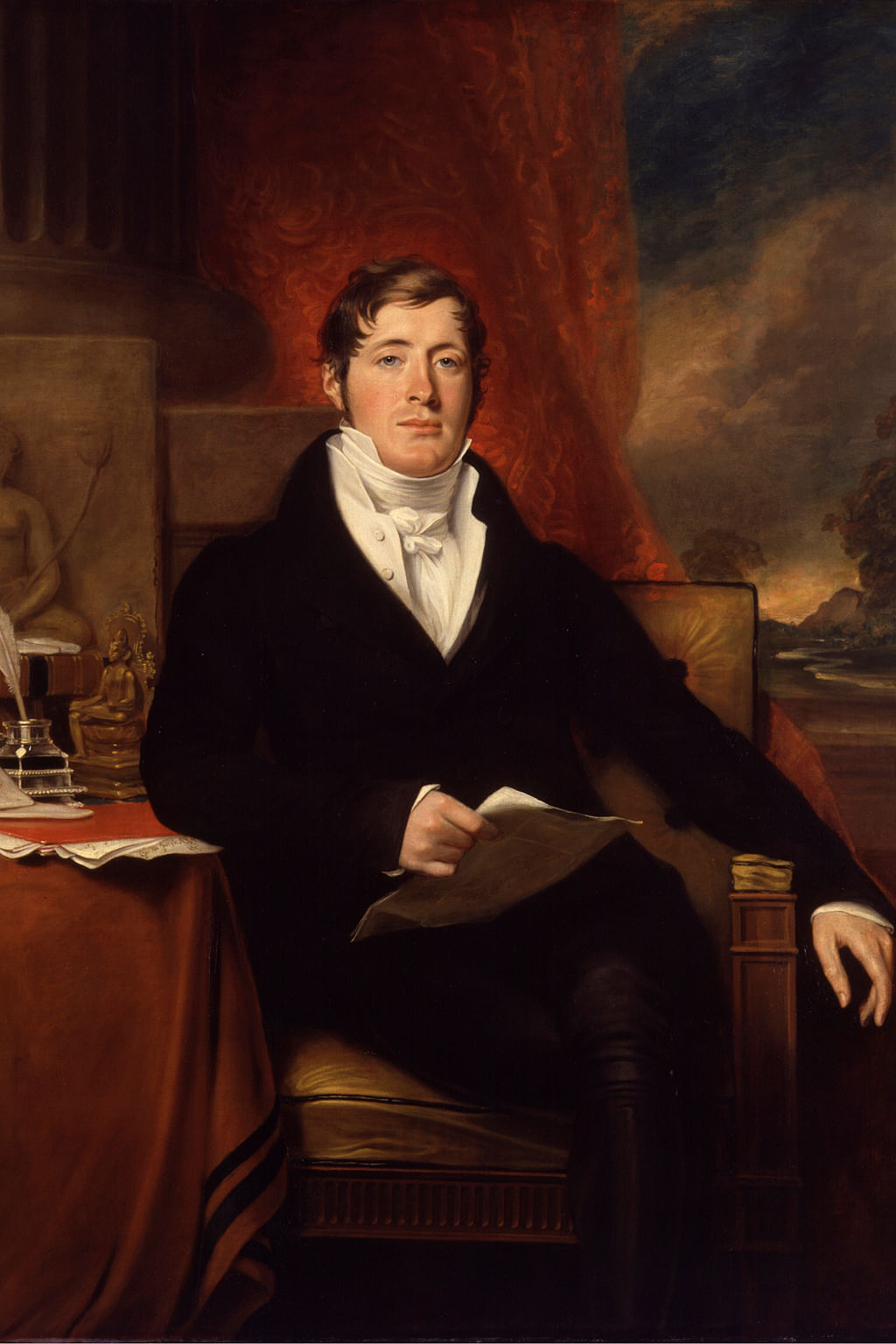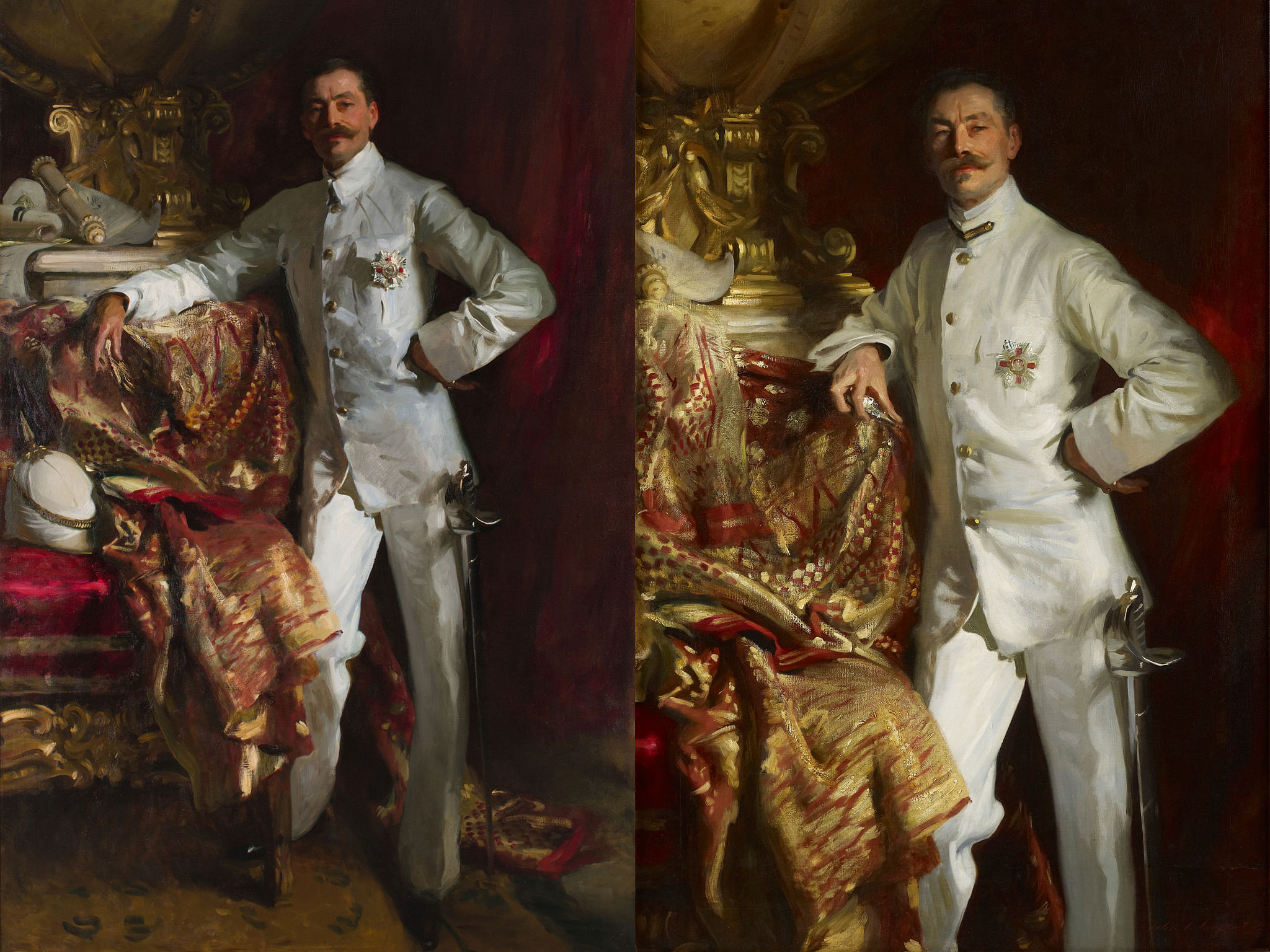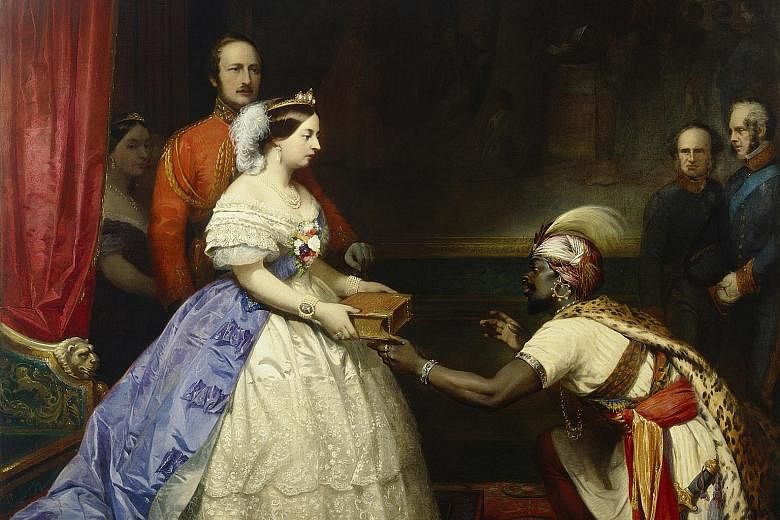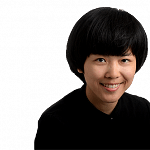The portraits displayed in state buildings here today may be different from those that graced the walls a century ago, when Singapore was a British colony, but they share a profound link.
Once, grand historical portraits of governors took pride of place in the Victoria Memorial Hall and City Hall Chamber. Today, portraits of the President and his wife hang in government buildings.
The continuing use of portraiture to project power points to how Singapore's colonial past continues to resonate today, and its connection to contemporary audiences is among the insights the exhibition, Artist And Empire: (En)countering Colonial Legacies, at the National Gallery Singapore aims to highlight.
The exhibition's intent - to consider the legacy of British colonisation and how it has been represented and challenged with time - was in the spotlight even before the show opened last week.
-
BOOK IT /ARTIST AND EMPIRE: (EN)COUNTERING COLONIAL LEGACIES
-
WHERE: Singtel Special Exhibition Gallery, Level 3 City Hall Wing, National Gallery Singapore, 1 St Andrew's Road
WHEN: Till March 26, 10am to 7pm (Sunday to Thursday), 10am to 10pm (Friday and Saturday)
ADMISSION: $15 for Singaporeans, $25 for non-Singaporeans
The museum's fund-raising gala, held last Friday, had borrowed its theme, The Empire Ball, from the exhibition.
This drew flak from some in the public, who found the use of the politically fraught term, "empire", carried with it the idea of colonial oppression, in poor taste for a celebratory event.
The museum's director, Dr Eugene Tan, says the ball was not named to provoke, but "what resulted from this was a discussion about the history of colonisation in South-east Asia and its legacies for our society today, and this is one of the reasons we curate exhibitions such as Artist And Empire".
He adds: "It's the role of art museums to ask questions through our programmes and exhibitions about our history and society, and these questions are sometimes difficult and uncomfortable.
"But for me, art museums must above all be places where artists raise critical questions about the society in which we live."
The first section of the exhibition is aptly themed Countering The Empire. It presents a critical examination of art produced for the British Empire by including contemporary art that challenge ideas in the historical works.
The show's curator Low Sze Wee says: "There is always that danger today of people treating these historical paintings as representing the truth; they are very realistic portraits or history paintings. We wanted to counter that and get people to realise that there is a lot more artistic subjectivity in them."
The second section of the show looks at how colonisation influenced the rise of modern art in former colonies.
The exhibition is presented in association with London's Tate Britain, which launched the show in November last year.
The London exhibition had a different narrative and focus. It was British-centric in perspective and looked at how the British Empire affected British art production.
The exhibition in Singapore takes off in a different direction, but includes key pieces of art from the London exhibition among its more than 200 works.
The version of Artist And Empire here also includes loans from London's National Portrait Gallery, the National Gallery of Australia and the National Museum of Modern Art, Tokyo.
UNEXPECTED ENCOUNTERS AT THE EXHIBITION
1 Confront the moral justification for colonisation
The British Empire was driven by commercial interests - to secure lucrative trade routes and markets and obtain raw materials for industries. But many Britons justified colonisation as a moral duty to bring civilisation to other communities.
A powerful portrayal of this belief is Thomas Jones Barker's 1863 painting, The Secret Of England's Greatness. It depicts an apocryphal scene where Queen Victoria replies an African diplomat's question about how Britain rose to power by handing him a Bible and saying that that was the secret to England's greatness.
The painting was first exhibited in 1863 and toured around Britain to sell print copies of it.
In the colonies, however, it was mocked as a disguise for the exploitative nature of Britain's colonisation.

2 See the original Sir Stamford Raffles portrait
The portrait of Sir Stamford Raffles is commonly found in history textbooks, but the original portrait, seen up close, reveals telling details.
The Buddhist sculptures and distant landscape paint the founder of modern Singapore as an erudite officer, learned in the study of ethnography and natural history.
This oil on canvas, which is in the collection of London's National Portrait Gallery, is shown in Singapore for the first time. It was painted by George Francis Joseph in Britain in 1817, the year Raffles was knighted and two years before he founded the British settlement in Singapore. A replica of this portrait, by John Adamson, was commissioned in 1912 to be placed in Singapore's Victoria Memorial Hall. That painting now hangs in the National Museum of Singapore.
3 Spot the difference with Sir Frank Swettenham
The two portraits of Sir Frank Swettenham, who served as Resident-General of the Federated Malay States (1896-1901) and Governor of the Straits Settlements (1901-1904), are reunited for the first time.
The Straits Association of London had commissioned prominent American artist John Singer Sargent to paint a portrait commemorating Swettenham's contribution as a colonial officer.
The first (left) was presented as a gift to Singapore and is now in the collection of the National Museum of Singapore.

A second portrait (right) was painted for Swettenham's personal keeping, which he later bequeathed to London's National Portrait Gallery.
While the paintings sport differences, they both convey a sense of British authority and show how portraiture was used during the British Empire to reinforce displays of power.
4 See the British surrender to the Japanese through the latter's eyes
The painting, The Meeting Of General Yamashita And General Percival, depicts the British surrender when Singapore fell to Japan in 1942.
The artist, Saburo Miyamoto, did not witness the fall of the British Empire in Singapore. He based his painting on documentary films, photographs and sketches he made during a brief stay in Singapore in 1942, after he was commissioned by the Japanese army to produce a war propaganda painting.
Miyamoto's inclusion of the British flag and white surrender flag in the room where the surrender took place is historically inaccurate, but it heightens the defeat of the British Empire by Japan.
This painting was exhibited in Japan during World War II and its rousing portrayal of Japanese triumph became part of the collective consciousness, influencing how people remember the empire even today.

5 Rethink public statues
British artist Hew Locke questions how and whom society honours through his Restoration series of photographs. In the exhibition, pictures of two public statues in Bristol are displayed side by side.
One of the statues is of Edward Colston (left), a founding father of the city and a merchant whose wealth came from the slave trade. Another is of Edmund Burke (right), a statesman who sought to abolish slavery.
Locke obfuscates their identities by covering the photographs of them with objects associated with the slave trade, such as shells and golden chains.
His act suggests that the power of these public statues rests not in the icons themselves, but how society negotiates their meaning.


